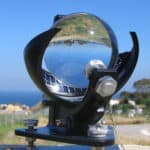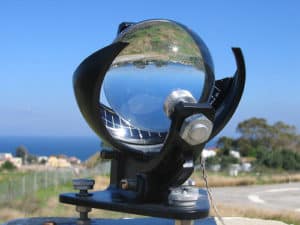 As a child, when I still drank grape-flavored juice-boxes and stared into the sky, my friend Emily sat with me at a splintered picnic table under Camp Y–’s pavilion and taught me that my freckles had creative potential; that I could use pens or permanent markers or lip-stick and do what she did: connect one dot to the other, make a diamond, or a sailboat, or a horse (she had a lot of freckles). But my freckles have always been too linear; I could come up with a line, or at best a slanting Orien’s Belt. Otherwise, I let myself become dejected by the inferior quantity of my skin abnormalities. For this, I need someone to blame, and so I blamed the sun.
As a child, when I still drank grape-flavored juice-boxes and stared into the sky, my friend Emily sat with me at a splintered picnic table under Camp Y–’s pavilion and taught me that my freckles had creative potential; that I could use pens or permanent markers or lip-stick and do what she did: connect one dot to the other, make a diamond, or a sailboat, or a horse (she had a lot of freckles). But my freckles have always been too linear; I could come up with a line, or at best a slanting Orien’s Belt. Otherwise, I let myself become dejected by the inferior quantity of my skin abnormalities. For this, I need someone to blame, and so I blamed the sun.
In defiance of my mother and father, I abandoned all SPF and counted the hours of direct sunlight I could catch on my arms. Sometimes, in school, I would sit in the window and roll my sleeves back, hoping for a freckle or two. This, as you may imagine, did not work. After many years of bright pink sunburn at Camp Y–, no more freckles had appeared on my arms, and I stopped trying to keep up with Emily and her horse-shaped freckle constellations.
I’d learned a lot from trying to fry my skin, more perhaps than a kid should have known; that the sun’s rays were once measured with a Campbell-Stokes sunshine recorder (think of a magnifying glass for frying ants, but adult-sized), and fascination with the power of weather lead to me to explore other weather phenomena: tornadoes, floods, earthquakes, volcanoes, etc. Twister (dir. By Jan de Bont) became my favorite film. Then it was Volcano (dir. by Mick Jackson), then The Perfect Storm (dir. by Wolfgang Peterson)–you get the drift.
Now, I probably wouldn’t race after supercell tornadoes in a beat-up truck like the people in Lee Sandlin’s “Storm Kings,” but instead, I might look at the images of lightning strikes in Bruce Buckley, Edward J. Hopkins, Richard Whitaker’s “Weather” or lava-flows in Robert Dinwiddie, Simon Lamb, Ross Reynolds’ “Violent Earth.”
I’m also more inclined to protecting valuable resource–my skin with sunscreen, and the planet by being mindful of the ways in which I can reduce my waste and carbon footprint. It has been a while, but I might take another look at “An Inconvenient Truth” (dir. by David Guggenhiem), “Global Climate Change” from EBSCO, or “Eating Animals” by Jonathan Safran Foer, to learn about how our everyday lives can impact the environment and world around us.
Samuel Simas is the technology assistant at the Morrill Memorial library; he is a graduate student at the University of Rhode Island’s Graduate School of Library and Information Studies. Read Sam’s column in the March 16th issue of the Norwood Transcript & Bulletin.


